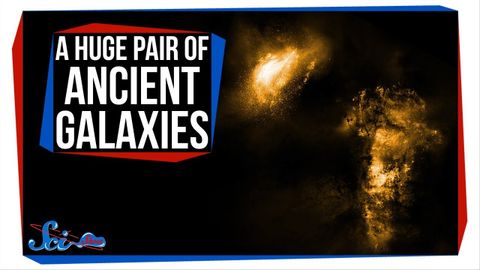一對巨大得令人髮指的古星系 (A Ridiculously Huge Pair of Ancient Galaxies)
 沒有此條件下的單字
沒有此條件下的單字- adj.巨大的;大而重的;大量的;厚重的;大規模的
US /ˌɑpɚˈtunɪti, -ˈtju-/
・
UK /ˌɒpə'tju:nətɪ/
- n. (c./u.)機會;時機;良機;工作機會;商機
- v.i.是重要的
- n. (u.)物質
- n.件事情;問題;原因
US /ædˈvæntɪdʒ/
・
UK /əd'vɑ:ntɪdʒ/
- n. (c./u.)優勢;優點;利益
- v.t.利用;佔便宜

